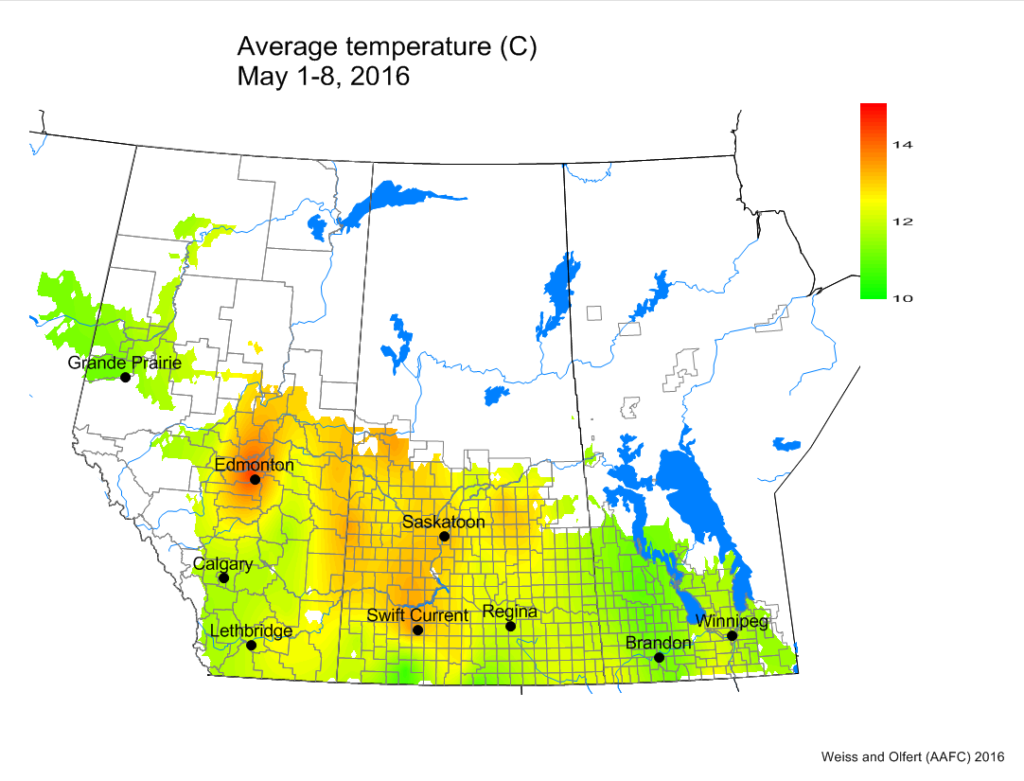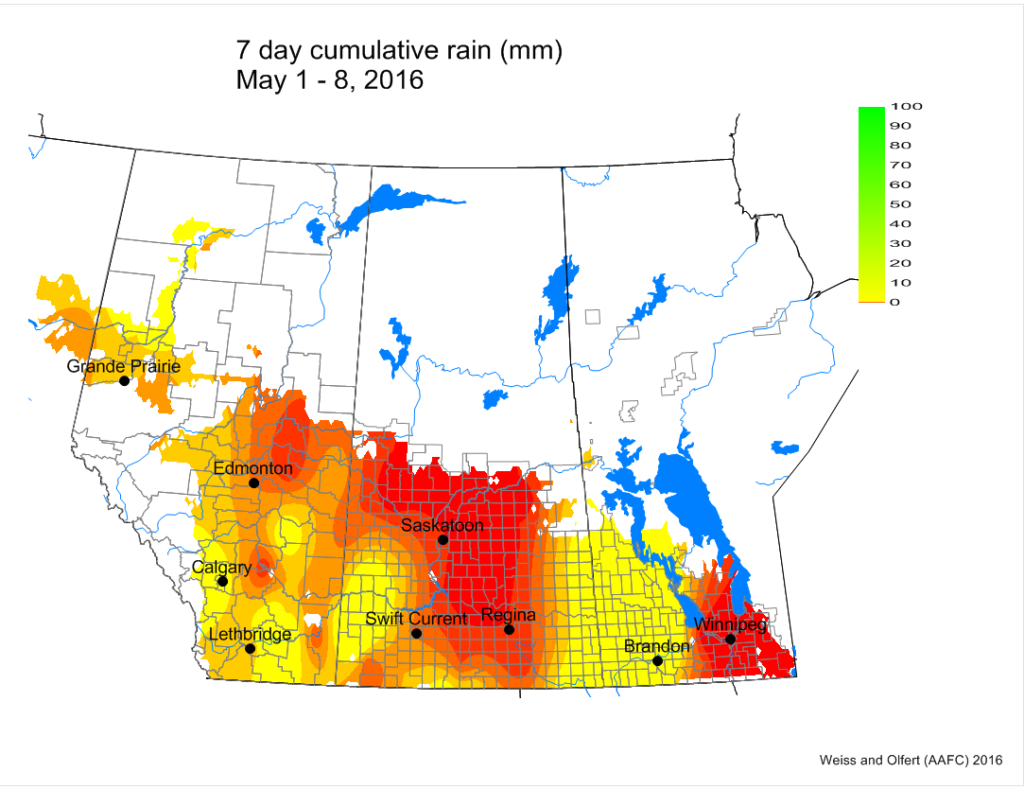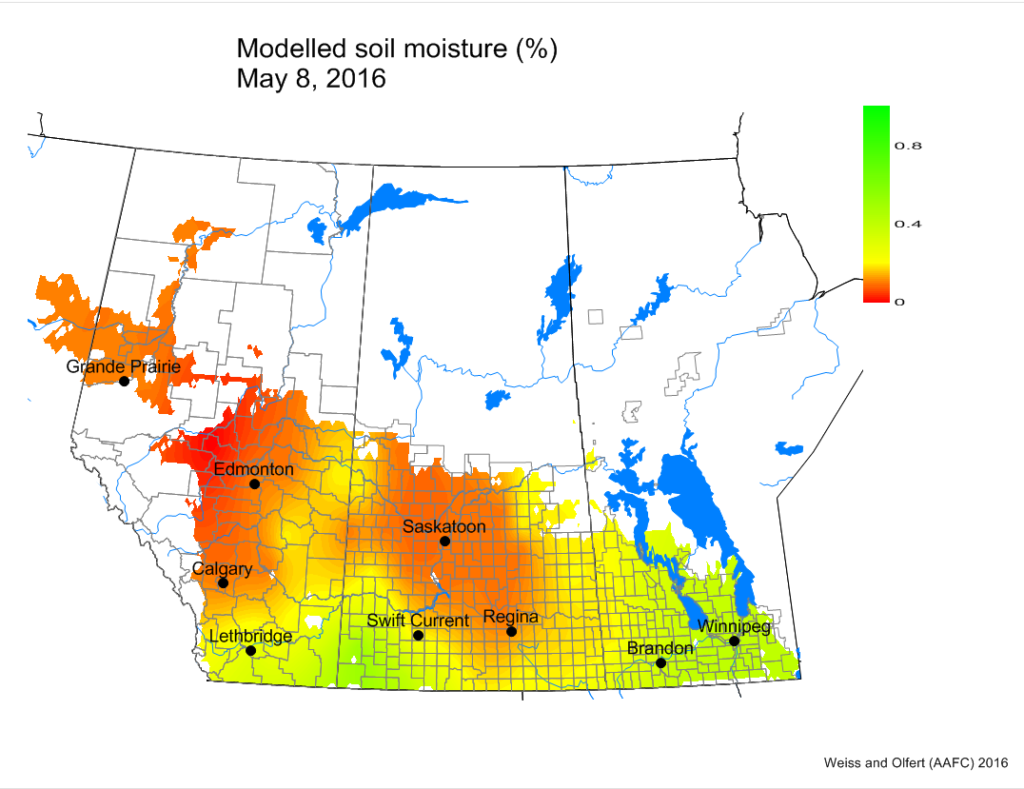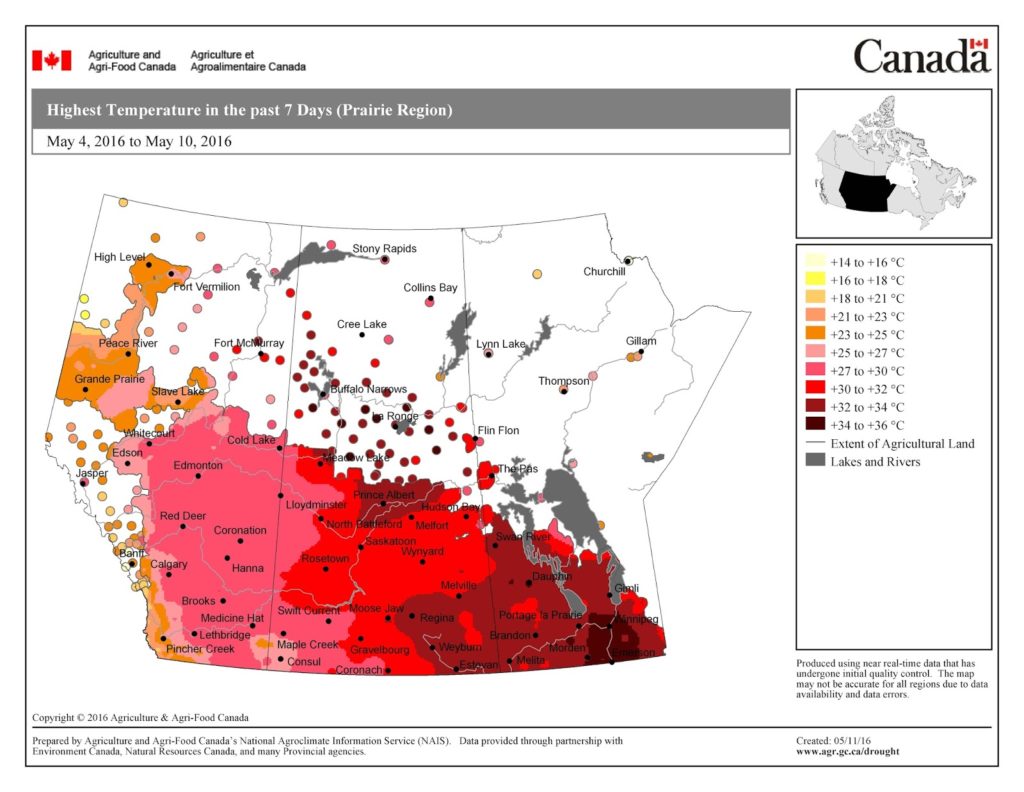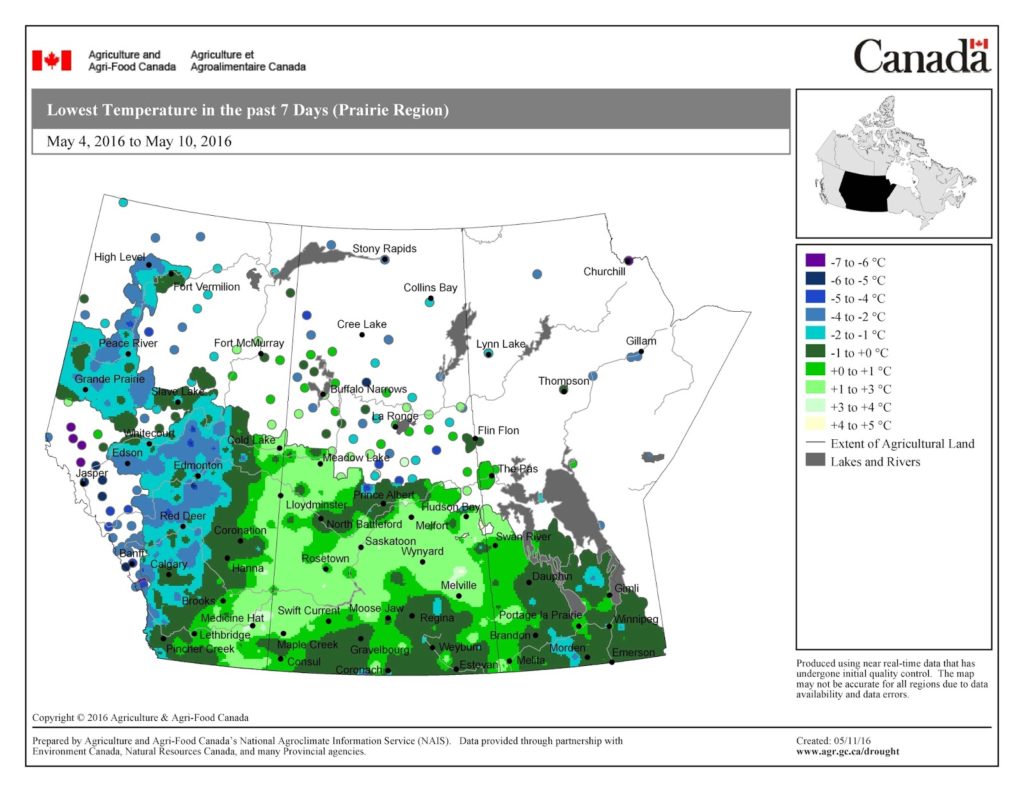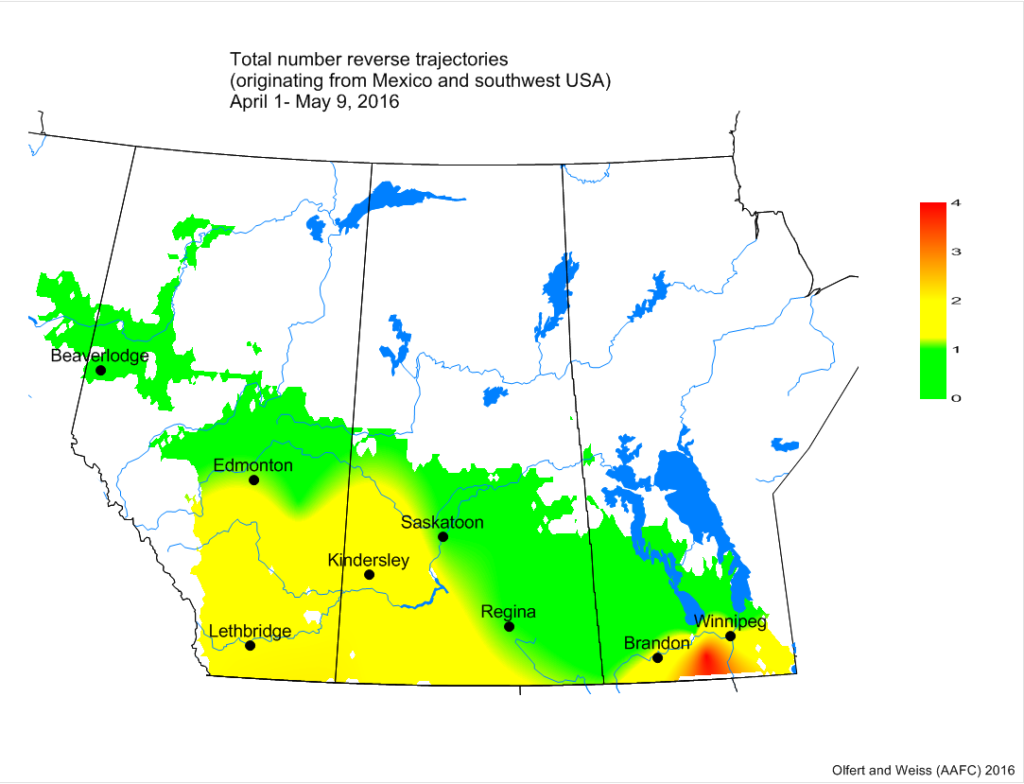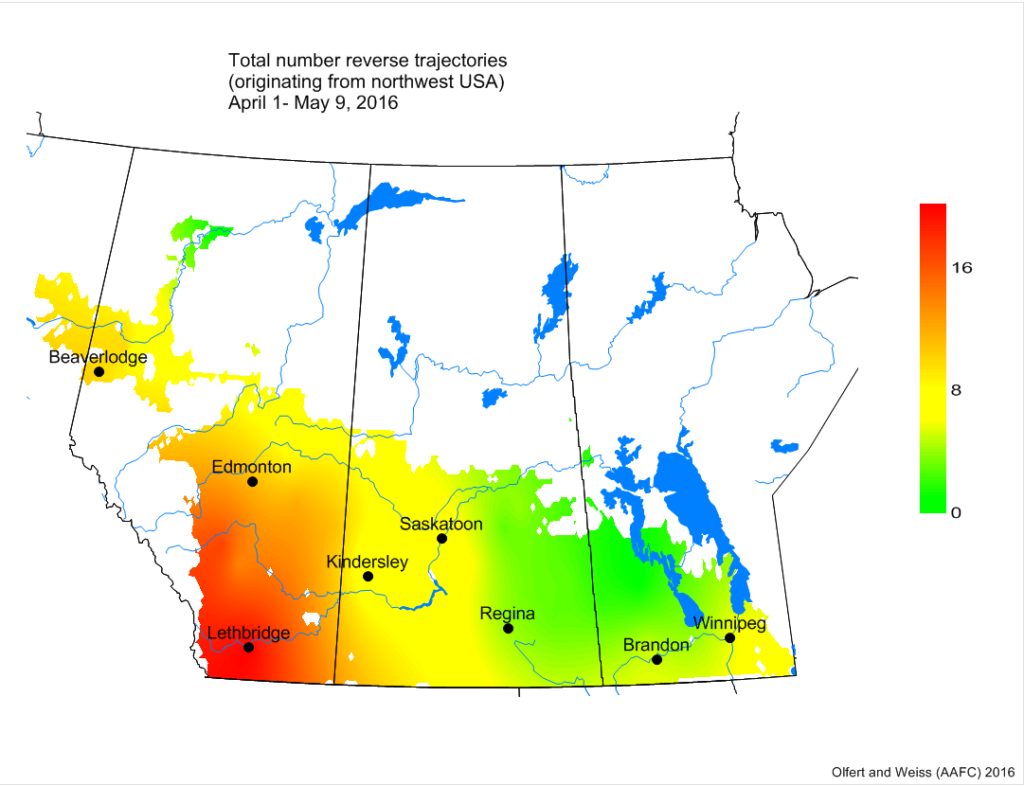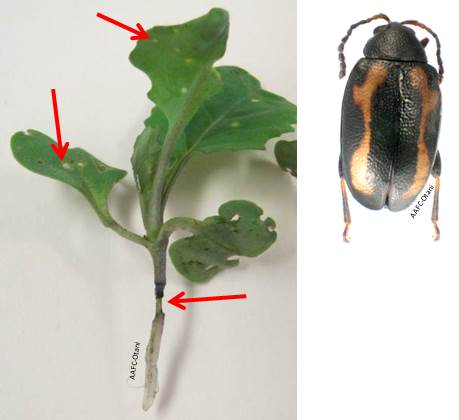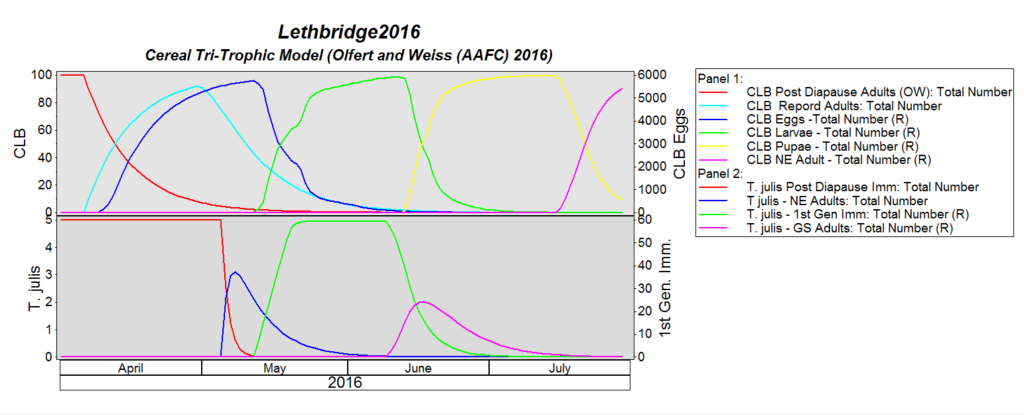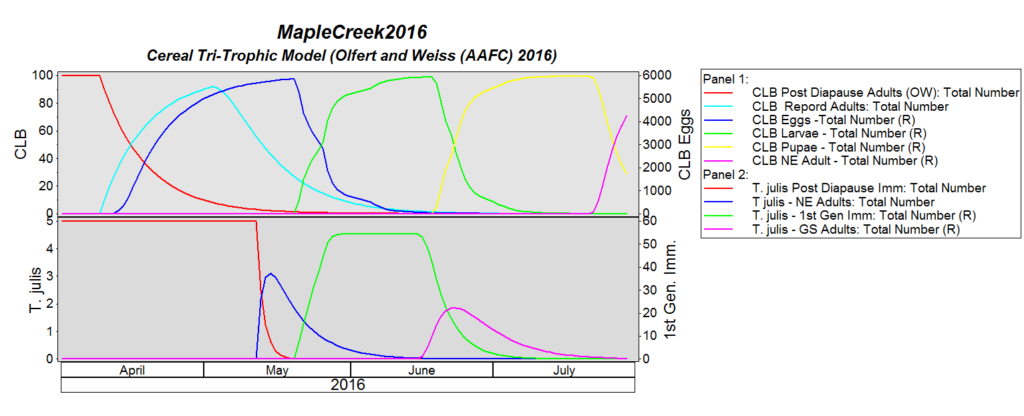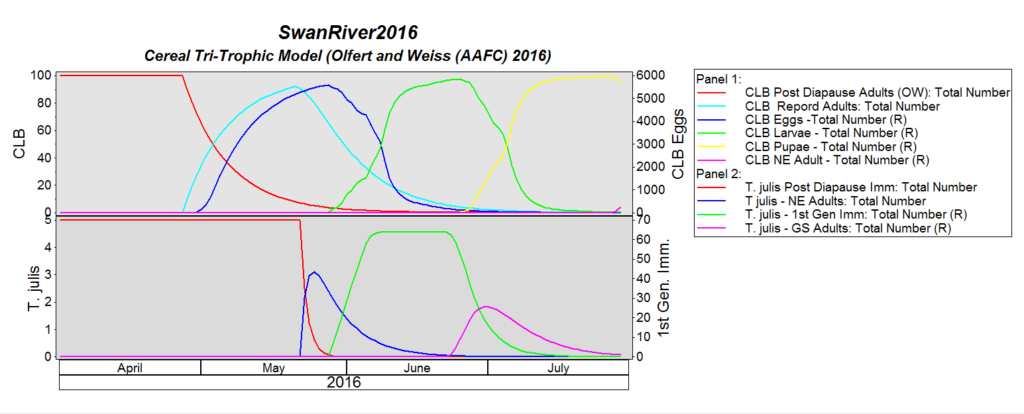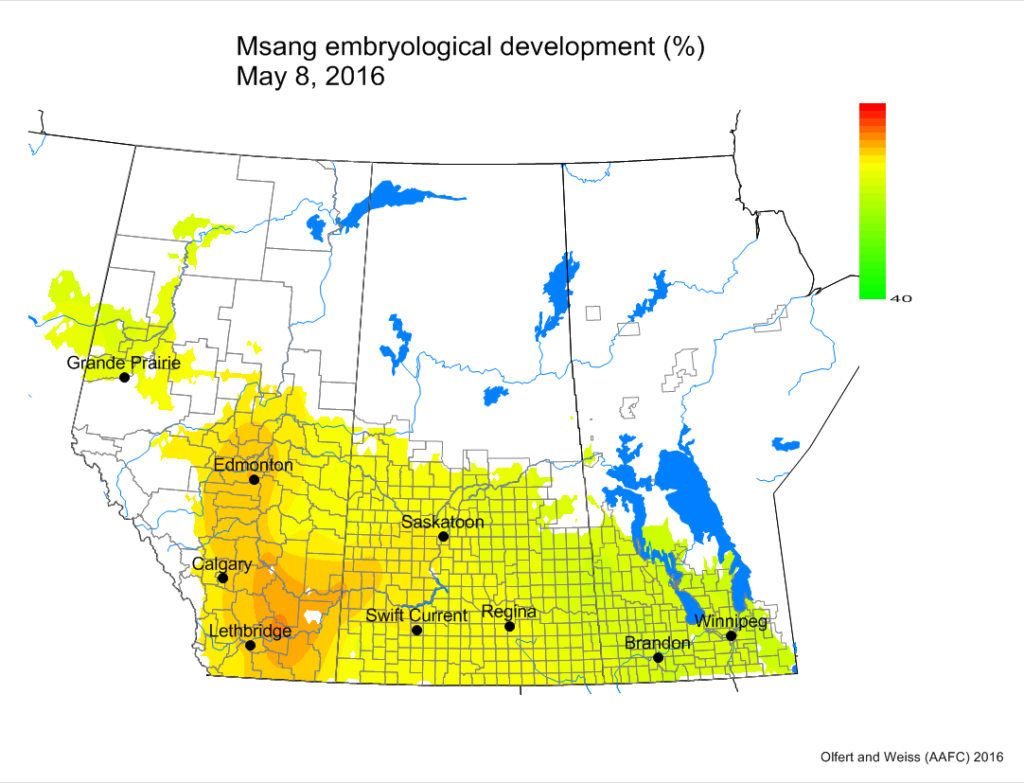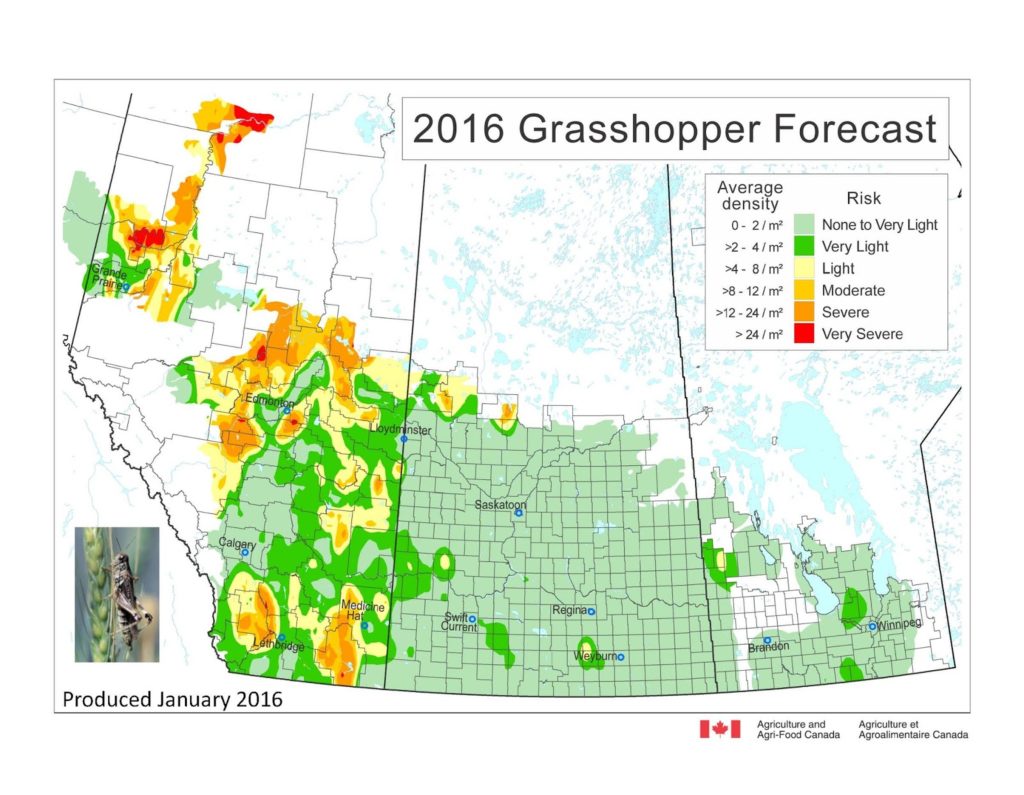Across the prairies, meteorological conditions for the period of May 1-8, 2016, continued to be warm and dry.
The map below reflects the Highest Temperatures occurring over the past 7 days across the prairies.
The map below reflects the Lowest Temperatures occurring over the past 7 days across the prairies.
The maps above are all produced by Agriculture and Agri-Food Canada. Growers may wish to bookmark the AAFC Drought Watch Maps for the growing season.

